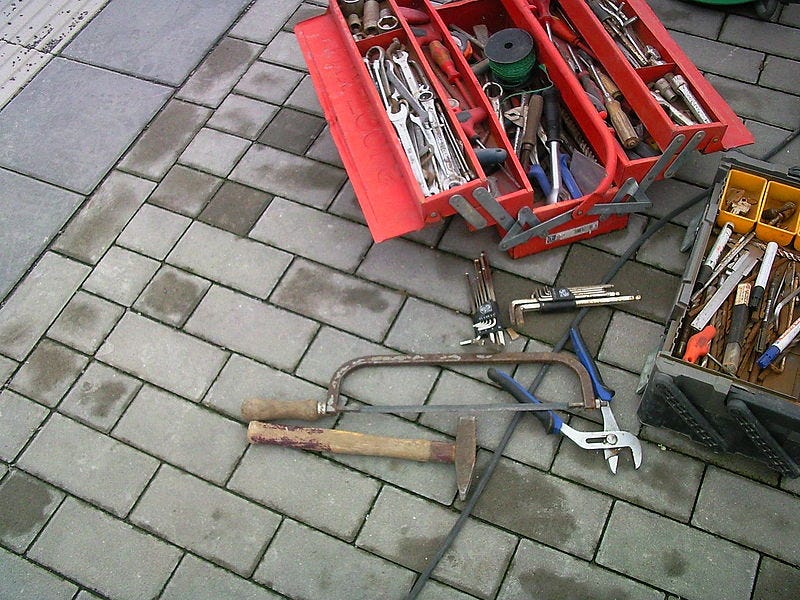Last Wednesday, President Biden backed the right to repair. Only the day before, my wife asked me if I was writing about it in my net neutrality piece. This once-fringe issue that was mostly of interest to hobbyists and farmers is having a moment. This is not surprising. For the past few years, tech policy and intellectual property policy folks have been saying that the right to repair was just bubbling under the surface. I often heard that all it needed was John Oliver to care about it enough to devote an episode of Last Week Tonight to it and it would be mainstream. John Oliver missed out, but the pandemic has pushed this issue to the front of people’s minds.

What is right to repair?
The right to repair is the idea that consumers should either be able to repair products that they purchased themselves or choose the vendor to contract with to make those repairs. On its surface, this seems like it would not be a problem. There are hundreds of independent mechanics in the United States that consumers can pick from to repair their cars. Many towns have a shop where you can get a computer, dishwasher, or small engine brought back to new. People have fixed all sorts of products at home for hundreds of years from clothes to electronics.
The catch is newer products. There is now a microchip in almost everything from tractors to printer ink. This has opened new doors for manufacturers to lock consumers into limited repair options. The move over the past few years has been to allow only the manufacturer and maybe a small cadre of authorized repair folks to fix an item. This distorts the market causing bizarre warps such as pre-computer farm equipment being at a premium despite being 40-years old or more.
Rent-Seeking
Economics has a principle called rent-seeking. The idea is that some economic actor — a company, group workers, trade group, et. — tries to gain more money without creating more economic activity. In this case, the manufacturer is trying to monopolize the secondary repair market to create a durable income stream. When companies do this they increase prices and lower choices for consumers while cutting out possible competitors. For example, John Deere makes six times more money a year on parts and repairs than on selling new tractors.
The nuts and bolts of how exactly this works varies from company to company. In tech, “warranty void if removed” tamper-evident stickers are a common way of using consumer fear over losing warranty protection to lock consumers in. These stickers are unenforceable and even illegal under US law but companies sometimes still use them. In other cases, companies make it difficult to interact with the computers inside of consumer electronics through digital and physical means. The Digital Millenium Copyright Act makes circumventing the digital protections illegal. Americans currently have a waiver from the Library of Congress that allows people to circumvent protections to fix their devices, but that might not be renewed in 2 years and developers have to put in time writing code to do this. Automobile and heavy equipment manufacturers use copyright and patent rights to limit who can manufacture parts for new models and refuse to see the parts or software to outsiders.
Wikimaps
I was away on Thursday because I was working on this map of a pre-historic lake for Wikipedia. Using USGS elevation data and a series of peer-reviewed papers, I worked with Jo-Jo Eumerus on finding where the edges of the lake probably were. It is the lead image for the article on the lake, which will be a Featured Article at some point in the next month or so. It will be an exciting day for me if it is chosen to be the image used in the talk page blurb.
Something extra special is that, looking at the current state of the discussion, this map will be a Featured Pictured on Saturday. Featured Pictures are the large images at the bottom of the English Wikipedia homepage. My map will hopefully have its own day on the front page of Wikipedia in that role as well.
The map looks simple, but it took 8 hours to make. Raw elevation data comes as tiles from the USGS. This area is where four of those tiles meet. To do the processing, the four tiles needed to be merged into a single image. That image with the elevation information was turned into contours that became the lake outline and the hillshade that you see in the background in QGIS.
More work goes into a visually simple map than you would think!





